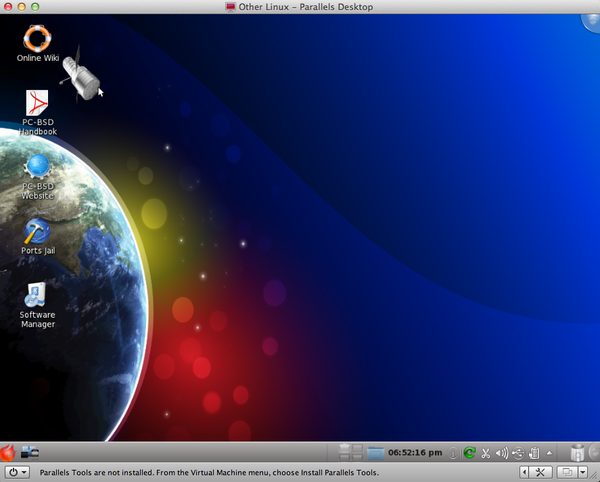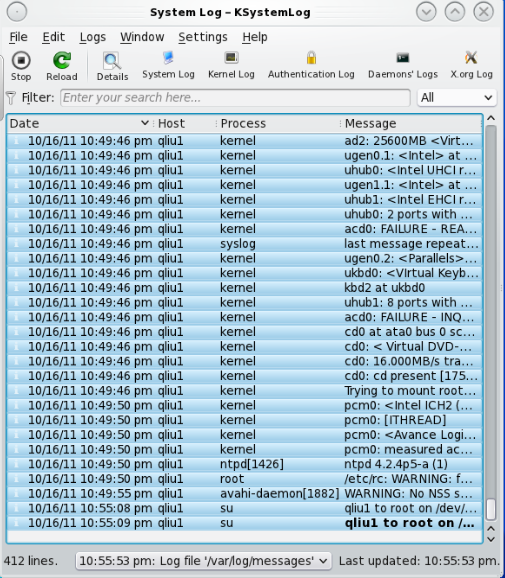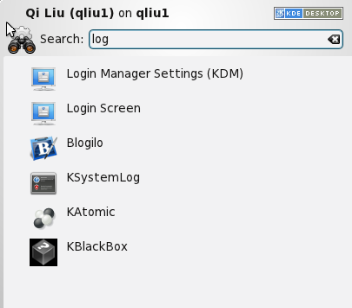COMP 3000 2011 Report: qliu: Difference between revisions
| Line 39: | Line 39: | ||
Here describe your experience in using your distribution for simple use cases. You should attempt to use the distribution for its intended purpose; if this is not feasible, explain why but still do your best to use it in some capacity. Again, explain any problems you encountered. Also, if feasible, include a screenshot of some typical or interesting activities. | Here describe your experience in using your distribution for simple use cases. You should attempt to use the distribution for its intended purpose; if this is not feasible, explain why but still do your best to use it in some capacity. Again, explain any problems you encountered. Also, if feasible, include a screenshot of some typical or interesting activities. | ||
When start this Linux system, it needs about 1 minute to boot. | |||
System log information: | System log information: | ||
| Line 50: | Line 51: | ||
more -f /var/log/messages | more -f /var/log/messages | ||
vi /var/log/messages | vi /var/log/messages | ||
# For PC-BSD: | |||
## Left hand side of tool bar, Application Launcher -> Application -> System -> System Log Viewer | |||
## When open it, it will ask for "root" permission. Enter the password the logging information will be displayed. | |||
[[File:system_log.png|300px System Log Viewer]] | |||
## Or you can simply search "log" at the Application Launcher search bar. It will display log application for you to choose. | |||
In my case, it display: Login Manager Settings(KDM), Login Screen, Blogin, KSystemLog (System Log Viewer), KAtomic, KBlackBox. | |||
[[File:search_log.png|300px System Log Viewer]] | |||
== Usage Evaluation == | == Usage Evaluation == | ||
Revision as of 03:03, 17 October 2011
Part I
Background
PC-BSD is desktop-oriented Linux distribution. The founder of PC-BSD, Kris Moore, with his team developed the 1st version of PC-BSD in early 2005. And they are still trying to create a better PC-BSD. Before PC-BSD project, easy-to-use Linux distribution came to success, but Linux market did not realize desktop market. Kris wanted to create a more user friendly Linux for desktop user. This Operating System is little configuration necessary, full-featured, free-of-charge, open-source based on FreeBSD and anybody, from the beginner to the advanced user, could use this OS easily.
PC-BSD HUBBLE, version 8.2, could be downloaded from here. There is another beta version 9, PC-BSD ISOTOPE, for downloading. The HUBBLE version is about 3.6GB.
This PC-BSD is based on FreeBSD with BSD license. PC-BSD pre-configures KDE desktop environment, and uses graphic installer and some other handy tools or pre-installed packages for better desktop uses experience. Its heritage is FreeBSD, while FreeBSD focuses on server use.
Installation/Startup
In this section, detail how you got the distribution up and running. Ideally, include a screenshot or two of the installation/boot procedure. Describe the setup of the virtualization software you used, if any. Also detail any problems you encountered and how you overcame them (or didn't).
Environment: Mac OX Lion as host and Parallels Desktop as virtual machine.
1. download "PCBSD8.2-x86-DVD.iso". Create a new virtual machine with Parallels Desktop. Continue and choose "other Linux".
2. When the image is loaded. There are several options for choosing to install the PC-BSD in different way. I choose "Boot installer [default]", which will start program with all standard options enabled.
3. After few seconds, it will jump into a graphic configuration view. I can setup Language, Keyboard, System, Disk, Users, Time, Components, and Summary. After these configurations, it will start installation. This will take about 25-30 minutes. It is not a short time. But it is about 3.5GB file, the time is acceptable.

4.After a long waiting, the installation finished and the system reboot virtual machine. Enter username and password, and then PC-BSD is ready to use.

Problem: When I first install this Linux, after finish installation, the system cannot be rebooted and stopped with “SCSI controller is not installed”.
Solution: I change the configuration in the virtual machine, change the disk location from IDE 0:0 to IDE 1:0. And re-install the system, it works. The real issue is unknown. But it is not the SCSI problem.
There is no other issues influenced the installation. The UI of PC-BSD is friendly. It looks like other graphical Linux, such as Ubuntu Linux. PC-BSD has some system management tools, Konsole terminal, pre-installed applications and others software which can reduce our command-based operations.
Basic Operation
Here describe your experience in using your distribution for simple use cases. You should attempt to use the distribution for its intended purpose; if this is not feasible, explain why but still do your best to use it in some capacity. Again, explain any problems you encountered. Also, if feasible, include a screenshot of some typical or interesting activities. When start this Linux system, it needs about 1 minute to boot.
System log information:
- For command-based Linux, the following command is needed.
cd /var/logs
View common log file /var/log/messages using any one of the following command:
tail -f /var/log/messages less /var/log/messages more -f /var/log/messages vi /var/log/messages
- For PC-BSD:
- Left hand side of tool bar, Application Launcher -> Application -> System -> System Log Viewer
- When open it, it will ask for "root" permission. Enter the password the logging information will be displayed.
- Or you can simply search "log" at the Application Launcher search bar. It will display log application for you to choose.
In my case, it display: Login Manager Settings(KDM), Login Screen, Blogin, KSystemLog (System Log Viewer), KAtomic, KBlackBox.
Usage Evaluation
To what extent does your chosen distribution meet its design goals? What is your overall impression of it? Be candid and specific in your critique or praise.
References
List all references used in proper bibliographic form, if any. Be sure to cite these sources in the main text as appropriate.


